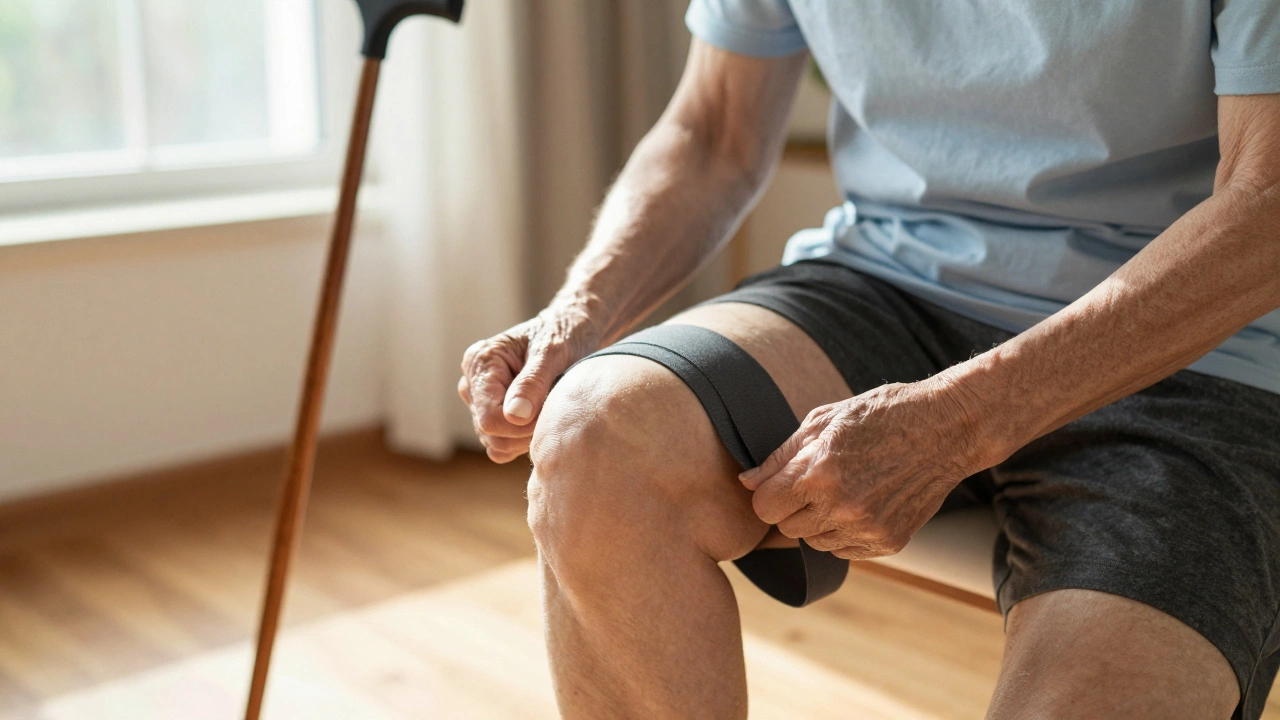Knee Pain: What’s Going On and How to Fix It
If you’ve ever winced while climbing stairs or felt a dull ache after a long walk, you know how knee pain can ruin your day. The good news is most knee aches aren’t life‑threatening and can be eased with simple steps. In this guide you’ll learn the top reasons your knee hurts, quick relief tricks you can try at home, and the red flags that mean it’s time to book an orthopedic appointment.
Common Causes of Knee Pain
First, let’s figure out why the knee hurts. The joint is a complex hinge made of bone, cartilage, ligaments, and a lot of fluid. Anything that damages these parts can spark pain. Here are the most frequent culprits:
- Overuse injuries – Running, cycling, or even standing for hours puts repeated stress on the cartilage. Over time you may develop patellar tendinitis or a tiny tear in the meniscus.
- Osteoarthritis – As we age, the smooth cartilage wears thin, causing bone‑on‑bone friction. The result is stiffness, swelling, and that classic “creaky” feeling.
- Ligament sprains – Twisting your knee wrong can stretch or tear the ACL or MCL. You’ll notice sudden sharp pain and possible instability.
- Bursitis – The small fluid‑filled sacs that cushion the joint can become inflamed after prolonged kneeling or a direct blow.
- Weight‑related pressure – Extra pounds push more load on the knee, accelerating wear and tear.
Notice any swelling, redness, or a popping sound? Those signs often point to an injury that needs professional care.
Managing Knee Pain and When to See a Doctor
Most mild knee aches improve with a few home strategies. Try the R.I.C.E. routine: Rest the knee, apply Ice for 15‑20 minutes a few times a day, use Compression with an elastic bandage, and Elevate the leg above heart level. Over‑the‑counter NSAIDs like ibuprofen can cut inflammation, but don’t rely on them forever.
Strengthening the muscles around the knee—especially the quadriceps and hamstrings—takes pressure off the joint. Simple exercises such as straight‑leg raises, wall sits, and step‑ups are effective. Aim for two sessions a day, ten reps each, and you’ll feel steadier within weeks.
If you’re recovering from knee surgery, the timeline matters. Our article on How Many Days of Rest Are Needed After Knee Replacement Surgery? breaks down the exact rest periods and how to progress safely. Typically, you’ll need at least a week of limited weight‑bearing, followed by guided physiotherapy.
When does home care stop being enough? Seek a doctor if you notice any of the following:
- Severe, throbbing pain that doesn’t improve after 48 hours.
- Inability to bear weight or walk without pain.
- Visible deformity, such as the knee looking out of line.
- Persistent swelling or fluid buildup.
- Fever or redness, which could signal infection after surgery.
An orthopedic specialist can order X‑rays, MRIs, or a simple physical exam to pinpoint the issue. Our guide titled What to Expect at Your First Orthopedic Appointment walks you through the process, from the tests you might get to how the doctor will decide on treatment.
Finally, keep your weight in check and wear supportive shoes. Even small changes—like swapping high heels for a low‑profile sneaker—reduce knee stress dramatically. If you love yoga or Pilates, focus on poses that strengthen rather than over‑stretch the knee.
Bottom line: most knee pain can be tamed with rest, ice, smart moves, and a bit of strength work. But if the pain sticks around or worsens, don’t wait—schedule a check‑up. Your knees will thank you with smoother steps and fewer winces.

What Is the #1 Mistake That Makes Bad Knees Worse?
The #1 mistake that makes bad knees worse is avoiding movement. Rest may feel safe, but it weakens muscles, stiffens joints, and speeds up damage. Moving gently every day-even with pain-is the key to lasting knee health, whether you're preparing for or recovering from knee replacement.

Red Flags After Total Knee Replacement: What You Shouldn't Ignore
Worried about your recovery after a total knee replacement? This article breaks down the real warning signs you need to watch out for. You'll learn what’s normal and what can signal a bigger problem. From swelling and pain to fever and odd noises, get straightforward info and practical advice to help you spot and handle red flags fast. Don't let small issues turn into big setbacks—know what to do and when to call the doctor.

Top 3 Deadliest Cancers: What You Need to Know
Feb, 21 2025



